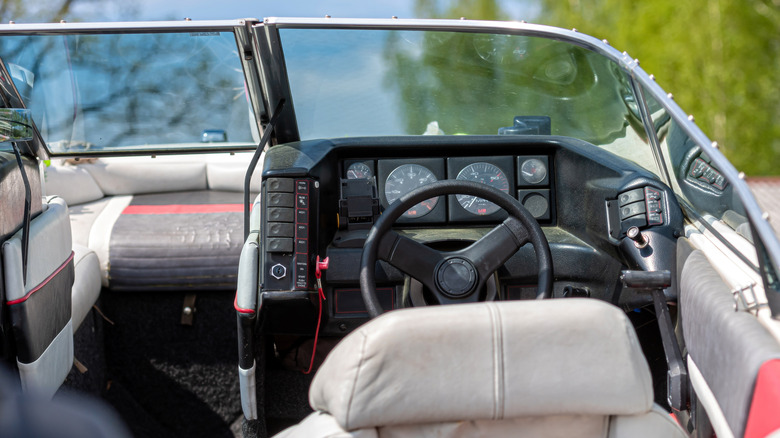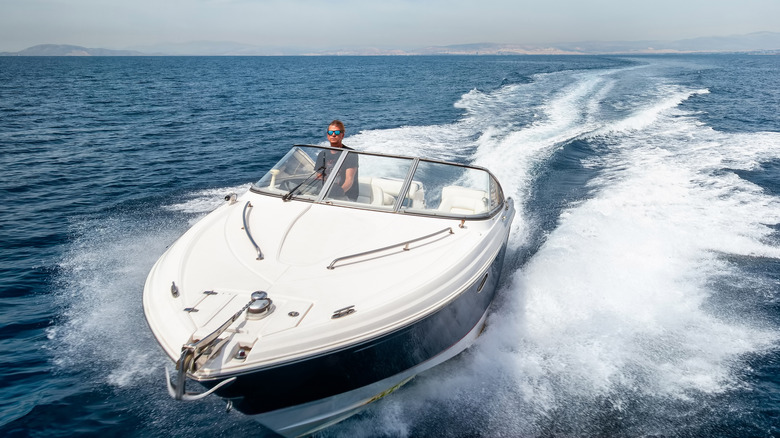Why Do Most Boats Have Steering Wheels On The Right Side?
If you've ever taken one of the coolest pontoon boats out on the lake, you might have noticed that the steering wheel is commonly found on the right side. In nautical terminology, that's known as the starboard side. If you're from the United States, this might stand out to you since manufacturers build all of the country's land vehicles with the steering wheel on the left side. There are several prevailing theories that attempt to explain the reason for this. One theory posits that in the past, even before the most powerful outboard engines, the steering oars of a boat were commonly positioned on the starboard side since people are more often dominant with their right hand. It was a matter of convenience.
However, a person's dominant hand has nothing to do with steering a boat today, which makes it a bit odd to continue it simply for tradition. There's a more practical reason that has to do with propellor torque. Since some of the four basic types of boat engines typically spin counter-clockwise, the boat tends to lean to the left when there's torque on the propeller. Keeping the driver starboard ensures that there's weight to balance it out.
Its placement is also a matter of maritime safety. Current boating regulations suggest giving the right of way to vessels on the right-hand side, so positioning the steering wheel on the starboard side gives the driver better visibility of boats that are supposed to have the right of way when they cross paths.
Why port and starboard instead of left and right?
When you're on a ship looking forward to the front (or bow) of the ship, starboard refers to the right side and port is the left side. Obviously, these aren't terms used in a car or most other land vehicles. When you reference which side an object is on in a car or which direction to turn, it's not too confusing to other passengers since all the occupants are strapped in and facing the same direction. When you're on a boat or a large vessel, it's a little more ambiguous to say left or right since everyone can be facing different directions. Sailors needed something more definitive, so they came up with starboard and port.
The genesis of the word starboard comes from the days long before there was even a rudder on a ship. This is when sailors used a steering oar. It's a combination of two Old English words: stéor, meaning "steer" and bord, meaning "the side of a boat." For a time, the other side was referred to as the larboard side, meaning "the loading side." Imagine shouting that in the midst of a storm. It was easily confused for starboard, so sailors began referring to that side of the ship as the port side. It became the side of the ship to commonly face the dock or port because it was easier to tie a ship to the opposite side of the steering oar.

